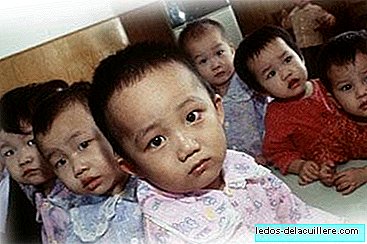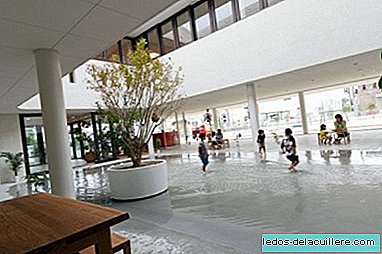
In Peques and Más we bring an interview to Dr. Ignacio Sánchez-Carpintero Abad. He is a Dermatologist specializing in Medical-Surgical Dermatology at the Clínica Universidad de Navarra and in childhood hemangiomas and vascular malformations. He is also a Dermatologist at the Ruber Clinic and the International Dermatological Clinic, Head of the Laser Unit of the International Dermatological Clinic and Responsible for the Hemangiomas and Vascular Malformations Unit of the Ruber de Juan Bravo Clinic in Madrid. The objective of the interview is to know, in an informative and clarifying way, the main novelties in the treatment of angiomas focusing on diagnosis and treatment in childhood.
What are angiomas?
Childhood angiomas or hemangiomas are benign tumors of vascular origin. They typically appear at birth or in the first weeks of life and grow up to 9-12 months. From then on they begin to disappear progressively over the years. The disappearance is not total in many cases, leaving sequels such as scars, changes in texture or skin color and sometimes bulging areas that deform the anatomy.
Why angiomas appear
The ultimate cause is not known. There are different hypotheses such as placental theory. This theory is based on the existence of certain similarities between the tissue of the hemangiomas and the placenta. There is also much talk in scientific forums about hypoxic theory: a lack of oxygen in an area prone to developing a hemangioma would be the exit signal for blood vessels to proliferate and hemangioma to form.
How an angioma is diagnosed
The diagnosis of a hemangioma is usually clinical and it is rarely necessary to perform radiological tests or a biopsy to confirm it. The most typical evolution that parents comment on is the appearance of a red spot in the first or second week of life that later grows, acquiring a greater or lesser volume. In some cases the hemangioma is from birth. In these cases it can be difficult to differentiate from another type of vascular lesion called port wine stain or capillary vascular malformation (often called also "flat angiomas").
When you have to intervene an angioma and at what age it is advisable to do so
Hemangiomas should be treated if they grow excessively, they are located in areas that can interfere with basic functions (such as around the mouth or eyes, in the diaper area) and if they are associated with any complications, such as ulceration .
The age to treat them is important because the response is better as soon as the treatment you need is established.
In our Unit of Hemangiomas and Vascular Malformations of the Ruber Clinic we begin treatment in the first months or even weeks of life, depending on the case.
What sequels, when children grow up, can leave the intervention of an angioma during childhood
Current medical treatments, using oral drugs, do not leave any sequelae and are very safe. The laser application is also very safe in pediatric age. These treatments are applied today to try to avoid possible surgery. In case this is irremediably necessary the patient will have a scar in the area of the intervention.
What techniques are applied in the treatment of angiomas in children
Today, most children with hemangiomas that need treatment receive oral propranolol, a safe drug with extensive experience in pediatric age. This drug sometimes fails to completely eliminate the hemangioma. In these cases the vascular laser can be applied. If the lesion is extensive or is located on the face, it is usually necessary to apply it with sedation, a procedure that is performed on an outpatient basis, without the need for admission.
How long can the patient live with the angioma
Without treatment a hemangioma can persist until approximately 7 years of age.
Today, thanks to the aforementioned treatments, we rarely see hemangiomas in children older than 3 years.
On the contrary, the stain in port wine is difficult to remove completely. In these cases, patients can only be treated with laser and usually require a large number of treatment sessions.
Why do you have to treat angiomas?
Hemangiomas must be treated because, although they are benign, they are true tumors. They grow, deform, ulcerate and impact in a clear way from the psychological point of view both in children who suffer from it and in family members. We must assess each particular case. It is true that some small hemangiomas, not complicated, do not need any medical intervention and just follow up. On the opposite end, there are some patients with hemangiomas in the area or in internal viscera, such as in the liver, which can be life-threatening.
What happens if you hurt yourself or hit yourself in an angioma
A wound or a blow on a hemangioma can cause continuous bleeding in the area. In most cases, it is enough to apply a gauze compressively for five minutes in the open area to stop bleeding. If you do not give in, you should go to an emergency department. In my experience this complication is rarely seen.
Patients with angiomas can live normal lives or have some limitation of mobility or basic functions
Depending on the size of the hemangioma, the area where it is located and, above all, the response to treatment that has had the limitation of day to day may vary. An assessment is advised as early as possible by a specialist in this area so that appropriate measures are taken as soon as possible. Unfortunately we find cases of patients misdiagnosed or treated late and could be much better if things had been done differently.
We thank Dr. Ignacio Sánchez-Carpintero Abad for his participation and collaboration in Peques and Más to explain and offer clarification on angiomas especially in children. He has also indicated to us, with the in order to provide training and answer questions, which make available to readers who are interested, a monographic blog about angiomas and vascular malformations. And since its recent creation about 500 questions have been answered and more than 70,000 visits have been received.












